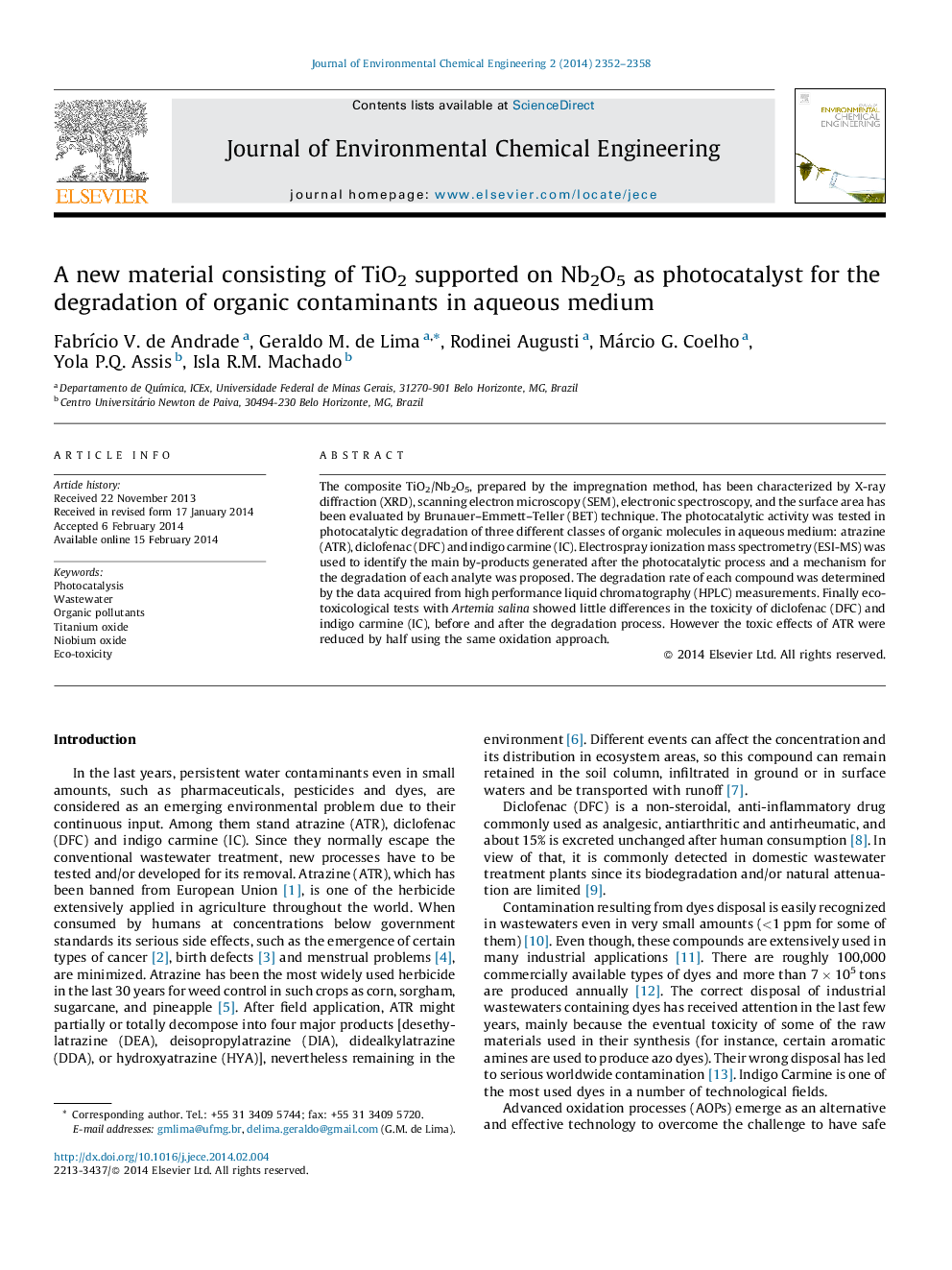| Article ID | Journal | Published Year | Pages | File Type |
|---|---|---|---|---|
| 221793 | Journal of Environmental Chemical Engineering | 2014 | 7 Pages |
The composite TiO2/Nb2O5, prepared by the impregnation method, has been characterized by X-ray diffraction (XRD), scanning electron microscopy (SEM), electronic spectroscopy, and the surface area has been evaluated by Brunauer–Emmett–Teller (BET) technique. The photocatalytic activity was tested in photocatalytic degradation of three different classes of organic molecules in aqueous medium: atrazine (ATR), diclofenac (DFC) and indigo carmine (IC). Electrospray ionization mass spectrometry (ESI-MS) was used to identify the main by-products generated after the photocatalytic process and a mechanism for the degradation of each analyte was proposed. The degradation rate of each compound was determined by the data acquired from high performance liquid chromatography (HPLC) measurements. Finally eco-toxicological tests with Artemia salina showed little differences in the toxicity of diclofenac (DFC) and indigo carmine (IC), before and after the degradation process. However the toxic effects of ATR were reduced by half using the same oxidation approach.
